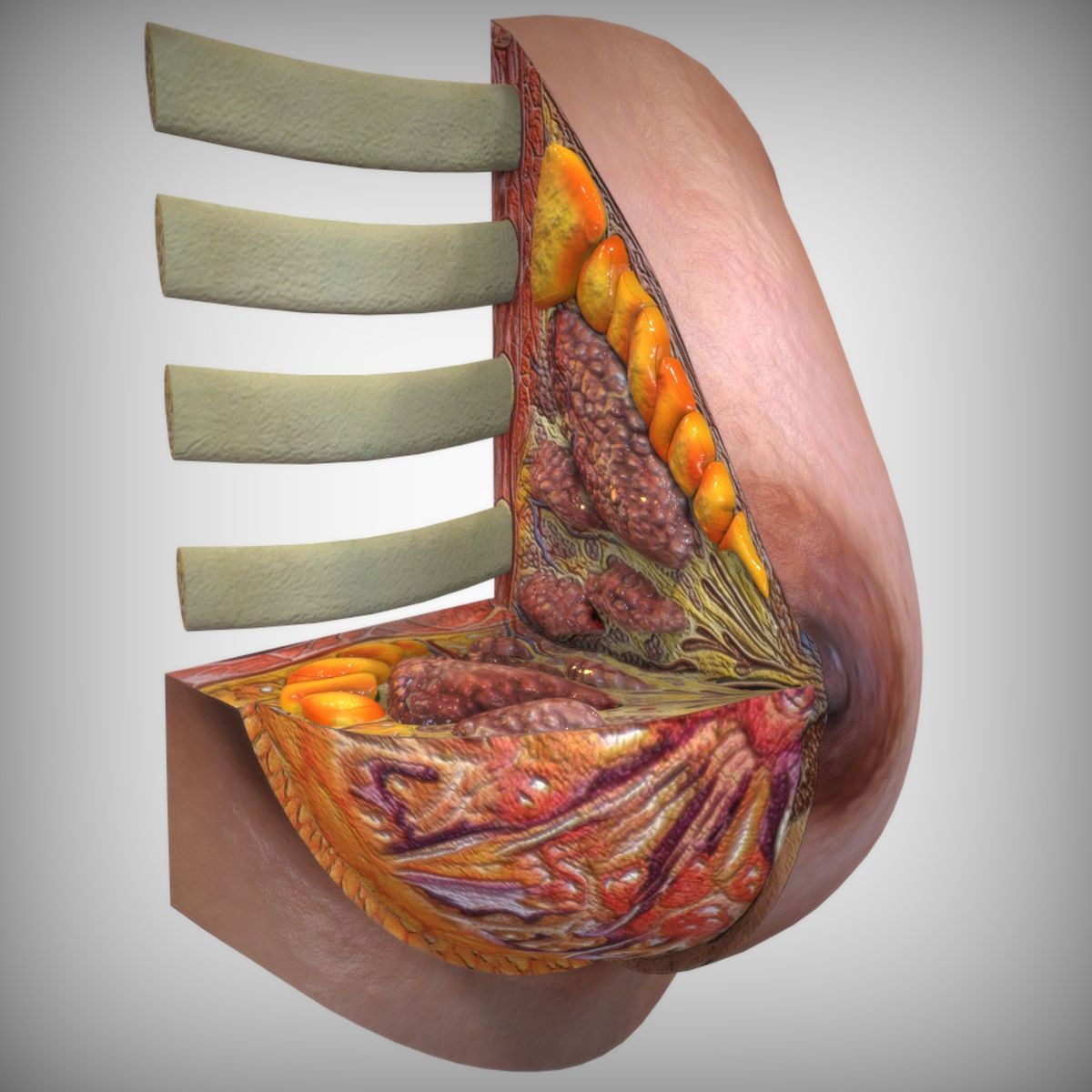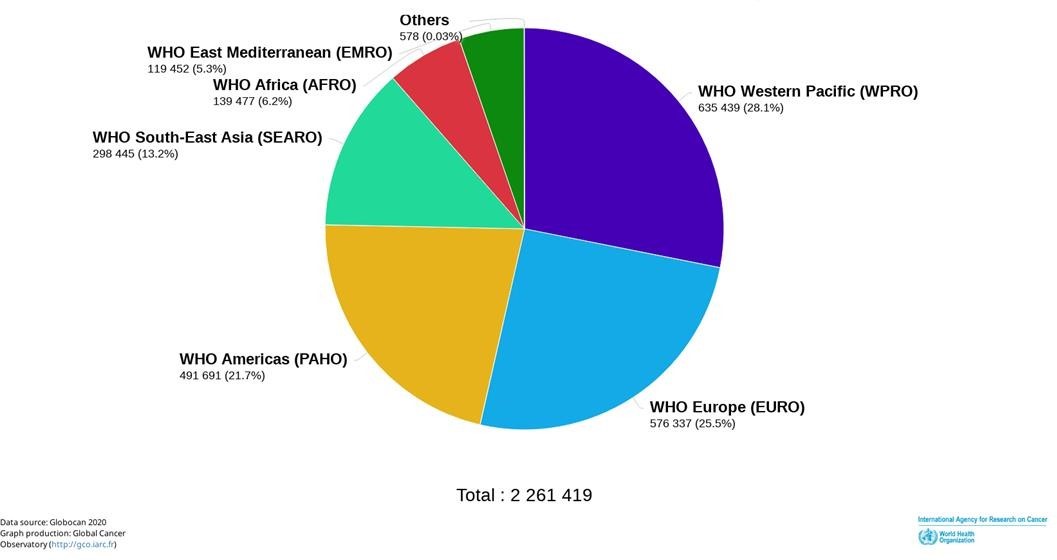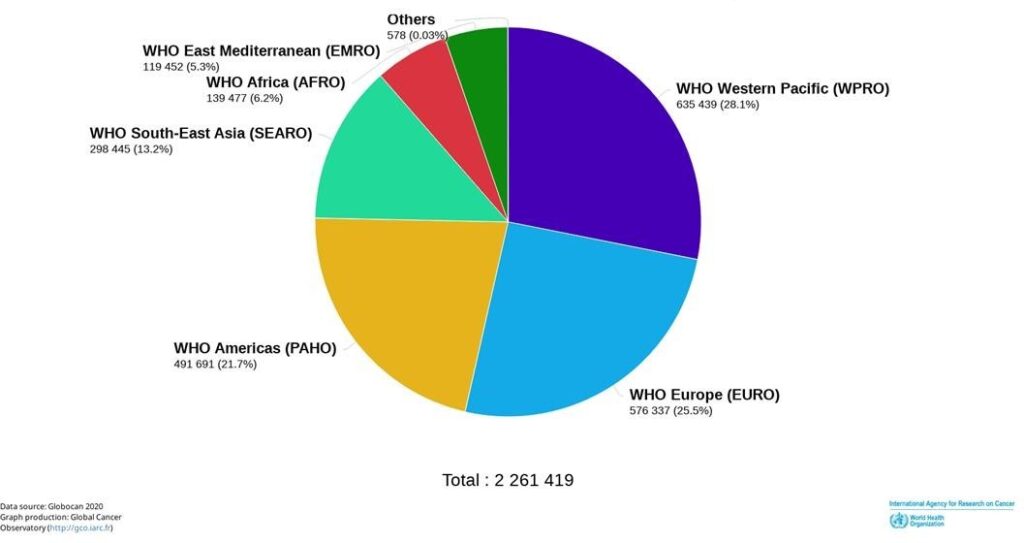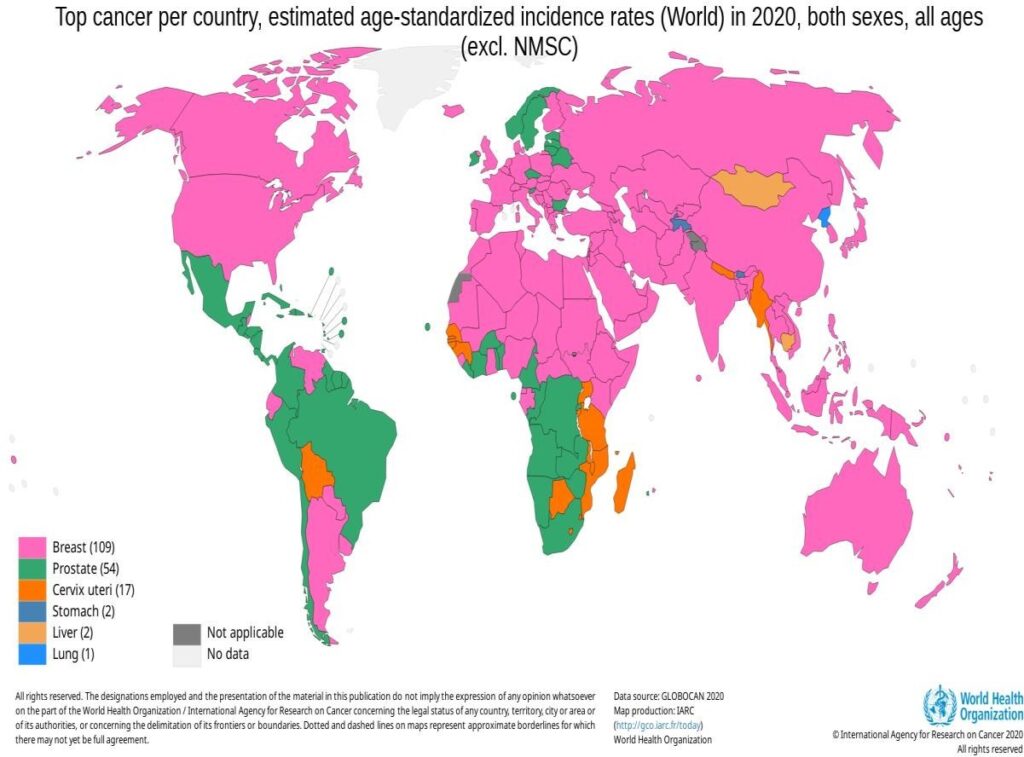NORMAL ANATOMY OF BREAST
1.1 Introduction
A thorough understanding of the normal anatomical features of the breast is essential to develop skills in CBE and in different breast imaging techniques. Breast imaging using mammography, ultrasound, or magnetic resonance imaging (MRI) involves recognition of the morphological features of the normal and abnormal breast tissues. Knowledge of the gross anatomy and the microscopic architecture of the breast tissue enable the radiologist to recognize the underlying pathological changes when certain characteristics are observed during imaging studies.
1.1 Gross anatomy of the breast
- The adult female breast is situated between the second and the sixth ribs and extends horizontally from the edge of the sternum (the flat bone in the middle of the chest) to the mid-axillary line.
- The breast overlies the deep fascia covering the pectoralis major muscle (pectoralis fascia), from which it is separated by loose areolar tissue containing small blood vessels and lymphatics. This loose connective tissue in the retromammary space gives rise to lucency in the mammogram.
- The lucent area is known as the retromammary bursa or Chassaignac bag. The breast tissue often curves around the lateral free margin of the pectoralis major.
- The axillary tail (tail of Spence) is a prolongation of the upper and outer quadrants of the breast towards the axilla. This tail passes under the axillary fascia (through the foramen of Langer) and may be mistaken for enlarged lymph nodes.
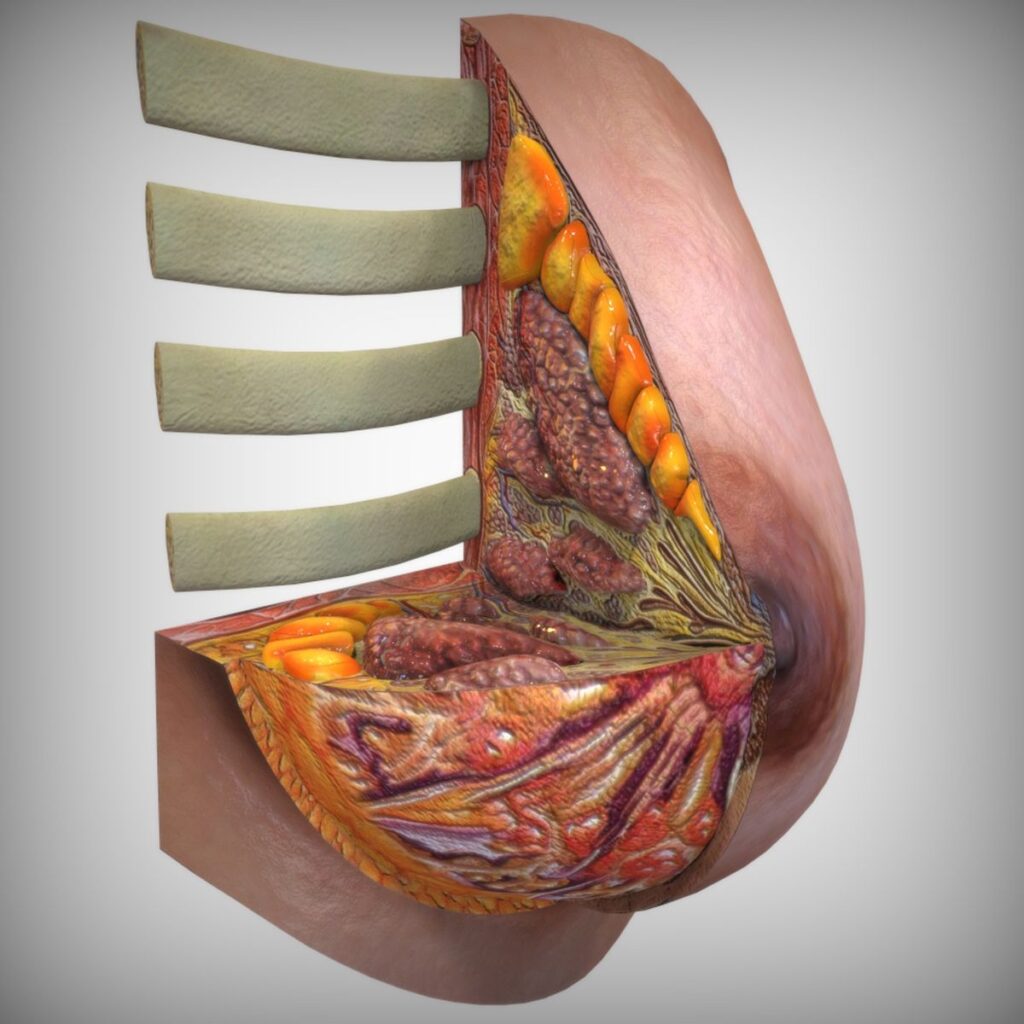
Each breast is divided into four quadrants, with the nipple and areola at the centre:
- UOQ: Upper outer quadrant (superior and lateral)
- LOQ: Lower outer quadrant (inferior and lateral)
- LIQ: Lower inner quadrant (inferior and medial)
- UIQ: Upper inner quadrant (superior and medial).
Skin and subcutaneous tissue
- The skin of the breast contains the nipple and the areola.
- The nipple is an erectile structure covered with thick pigmented skin, which also contains muscle. The orifices of the lactiferous ducts are located near the apex of the nipple.
- The skin of the areola contains numerous modified sweat glands and sebaceous glands. These glands, also known as Montgomery tubercles, enlarge during pregnancy.
- The areola contains involuntary muscles in the subcutaneous tissues that are arranged in concentric rings and radially.
The breast tissue underlying the skin is composed of:
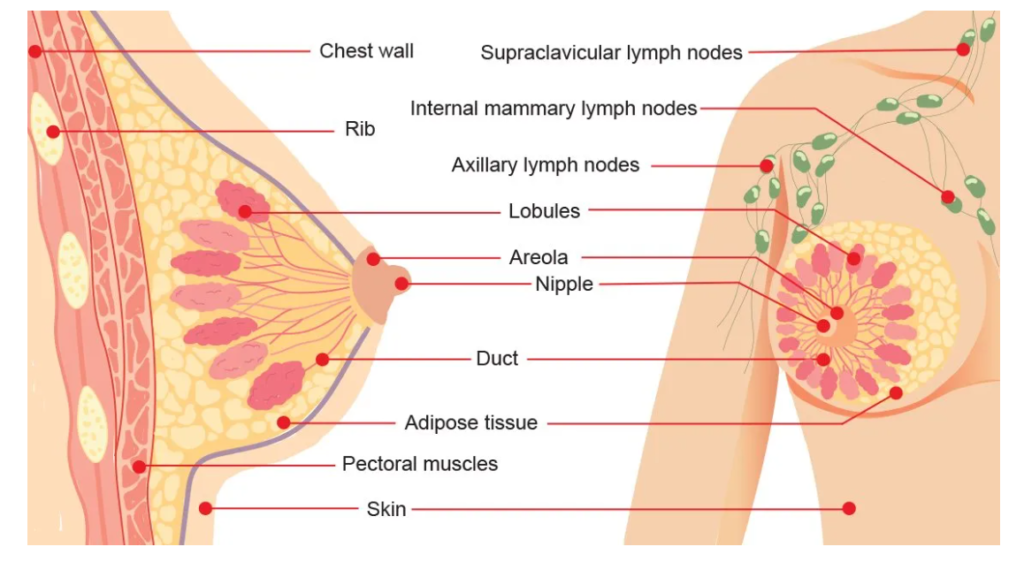
- the glandular tissue (epithelial components), and
- the adipose tissue supported by the fibrous connective tissue (stromal elements).
The glandular tissue (epithelial components)
The glandular component of an adult breast comprises 15–20 lactiferous lobes (segments) embedded in the fat and supported by the fibrous connective tissue. Each lobe is made up of 20–40 terminal duct lobular units (TDLUs), which are the functional units of the breast. Each TDLU comprises 10– 100 small sacs called glandular acini, which are connected to a terminal duct. The acini and the terminal ducts produce milk.
The terminal duct has an intralobular component and an extralobular component. Extralobular terminal ducts attach the lobule to the ductal system. Each lobule drains into a lactiferous duct, which converges to drain at the nipple–areolar complex. The lactiferous ducts dilate to form the ampulla (collection of lactiferous sinuses) as they converge to the nipple.
